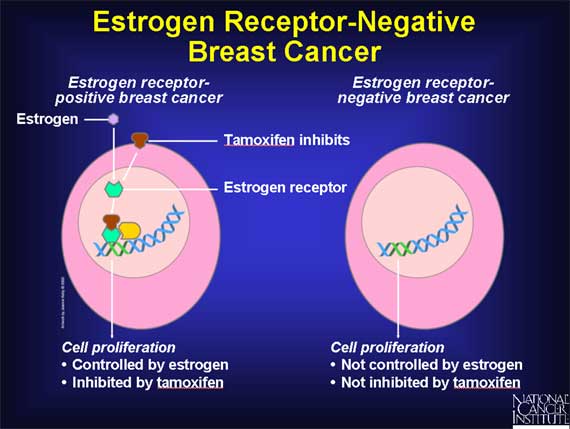|
Unlike normal breast cells, cancer cells arising in the breast do not always have receptors for estrogen.
Breast cancers that DO have estrogen receptors are said to be "estrogen receptor-positive," while those breast cancers that DO NOT possess estrogen receptors are "estrogen receptor-negative." In women with estrogen receptor-positive cancers, cancer cell growth is under the control of estrogen. Therefore, such cancers are often susceptible to treatment with tamoxifen, because tamoxifen works by blocking the interaction between estrogen and the estrogen receptor.
In contrast, the growth of estrogen receptor-negative cancer cells is not governed by estrogen, or treated with tamoxifen.

< Previous | Index | Next Slide > |